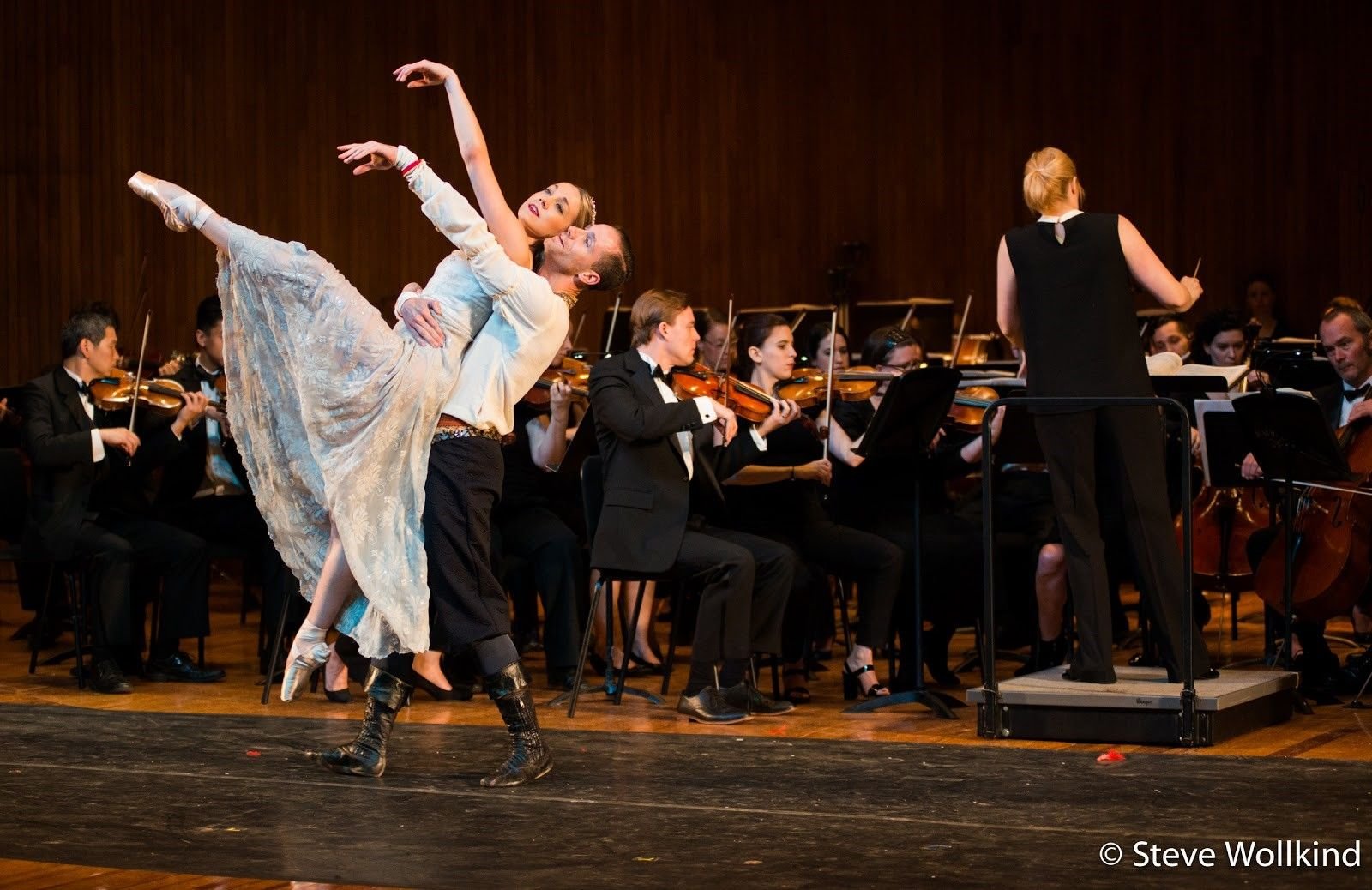The Dancers Are “The Whipped Cream On The Cake”: An Orchestra Accompanied by Ballet

Courtesy of Steve Wollkind
The Boston Symphony Orchestra. Conservatory chamber groups. Early music specialists. Contemporary music ensembles. Professional-sounding youth orchestras. In Boston, classical music concertgoers are presented with a dizzying array of evening concert choices. Why, then, should you consider attending the Cambridge Symphony Orchestra’s upcoming performance of “A Midsummer Night’s Dream” on June 16th at MIT’s Kresge Auditorium, which is presented as a semi-staged ballet with 2 vocal soloists, the 33-woman New England Conservatory Young Women’s Chorale, and 10 ballet dancers?
Because the Cambridge Symphony Orchestra, a community ensemble comprised of volunteer musicians, occupies a unique role in Boston’s classical musical scene. By definition, the musicians of a community orchestra are defined as “amateurs” since they are unpaid; however, the performance level of the CSO rivals that of a professional orchestra. Conductor Cynthia Woods argues that the CSO’s “demanding schedule, high artistic standard, and musical commitment” make the ensemble quasi-professional. Moreover, more so than professional orchestras, community orchestras also often have educational missions alongside their desire to deliver professional-level performances. Although the CSO’s roster consists of many music teachers, Cynthia Woods emphasizes that these teachers are students once again when they play with the CSO: “[they] are really trying to improve in every concert. In that way, the CSO is more like an educational orchestra and less like a professional one, but that works to our advantage, because our musicians come into a project like this with absolutely 100% ‘go for it’ enthusiasm.”
Furthermore, the production promises to be special in several ways. First, while the accompanying orchestra of a ballet usually sits out of sight in the pit, the CSO will play alongside the ballet dancers onstage. This draws the attention of the audience simultaneously to the musicians and the dancers. Choreographer Gino di Marco emphasizes that unlike traditional ballet productions, in this particular production, “The symphony is the main topic of conversation…It’s easy for the choreographer to be self-indulgent, but here I’m trying to remove my ego out of the equation.”
While the staging is innovative, the music is preserved from Mendelssohn’s original score. Di Marco is experienced with “A Midsummer Night’s Dream” and has danced in versions of the ballet three times already. He says that “adaptations of the score always suit the needs of the choreography. I am trying to make the story come true without making adjustments to the symphonic score.” In this ballet, Marco and his dancers are “the whipped cream on the cake.”
Costume-designer Ruth Whitney finds that the beauty of this production is that the visual component of this production is not limited to the movements of the dancers. The costumes, too, add to the show. Whitney began sewing her own costumes after she became frustrated with the uncomfortable outfits created by outsiders with no dance background. As a ballet dancer (she will play the role of Titania in this production), her handmade costumes are constructed with the philosophy that “you dance how you feel.”
Whitney, like di Marco, highlights that the onstage placement of the orchestra is special. While musicians are usually focused on how they sound and not how they look, Whitney says that from the dancer’s perspective, “watching an orchestra is really beautiful. The orchestra has its own movements.”
The rest of the concert promises to impress, as well. The concert begins with a Fanfare for Brass recently composed by Philip Sawyers in 2016. This piece will feature modern brass instruments which contrast with the period instruments used in Mendelssohn’s ballet. In fact, the trombones will be playing three sets, one for each piece, throughout the concert. Also featured is Ravel’s Suite No. 2 from Daphnis et Chloe.
This production encompasses “both worlds of music education and professional performance,” says Woods. The key is patience, when trying to coordinate musicians, vocal soloists, choir-members, and dancers. But “with the right people,” she says, “it is a complete joy to create something that really involves three different artforms.”
You can see this production of Mendelssohn’s “A Midsummer Night’s Dream” on June 16th at 8 pm at MIT’s Kresge Auditorium. You can purchase tickets here.
Allison Pao is a producer for WHRB Classical.